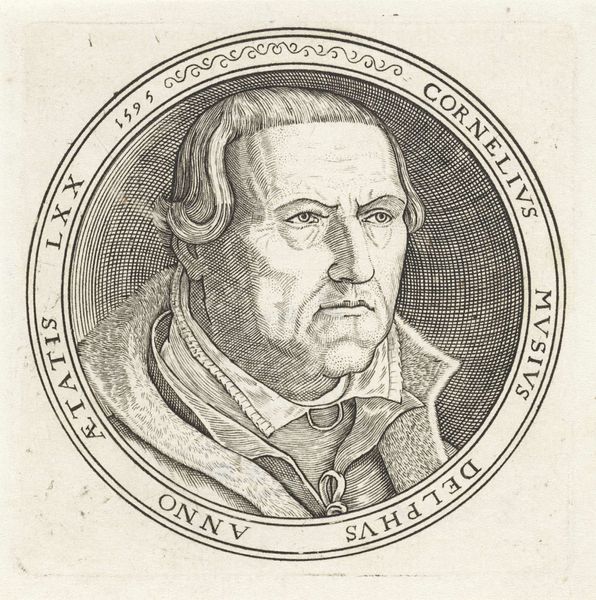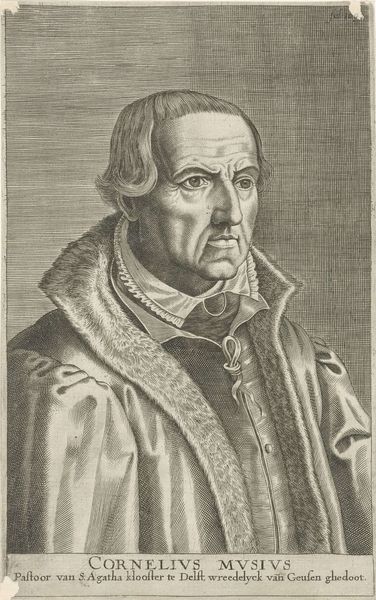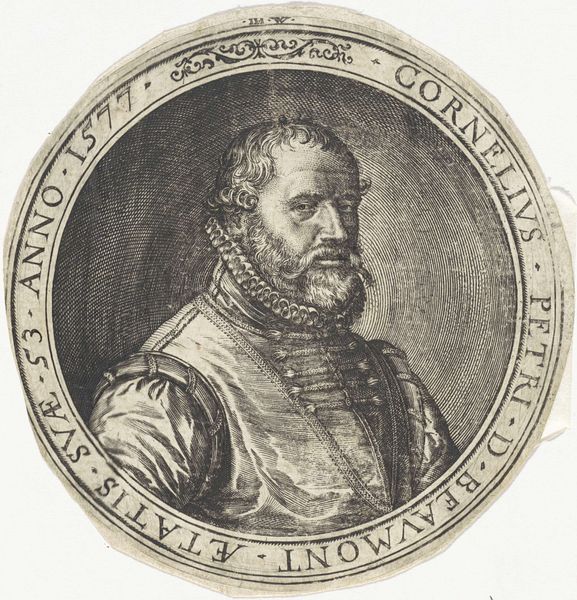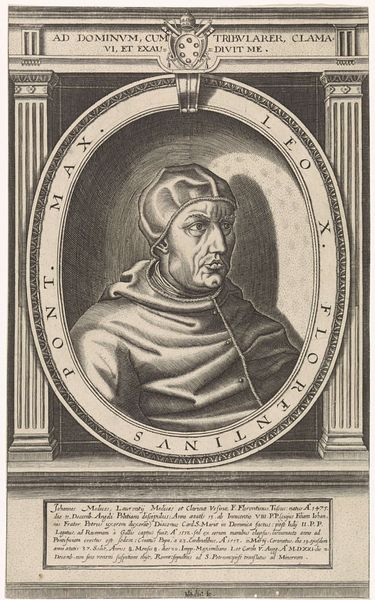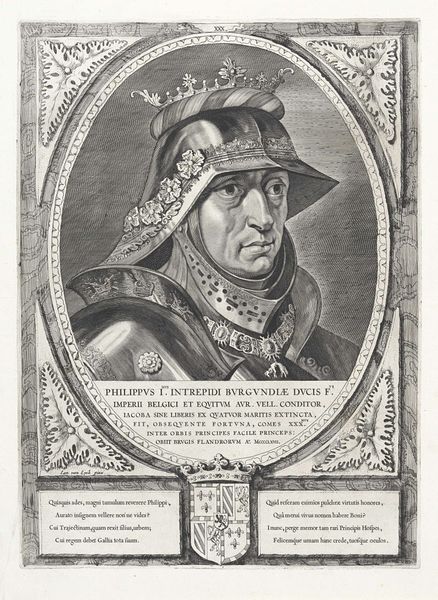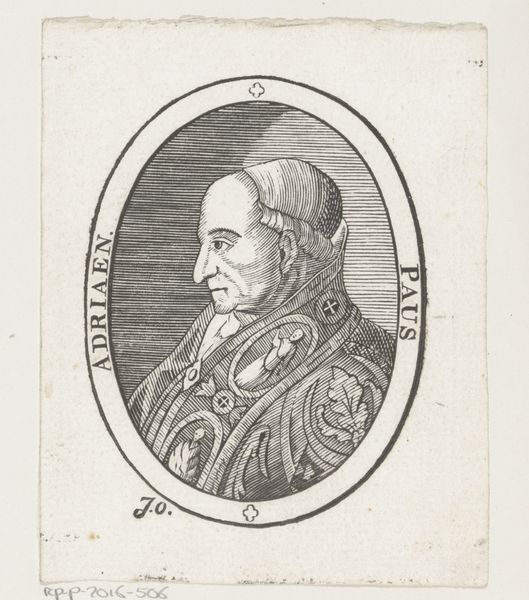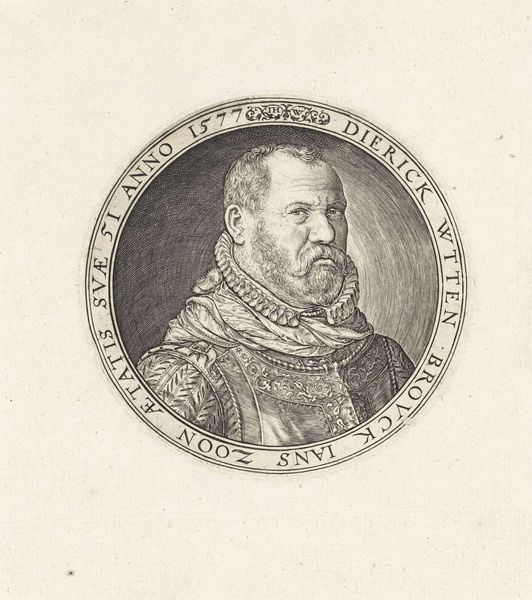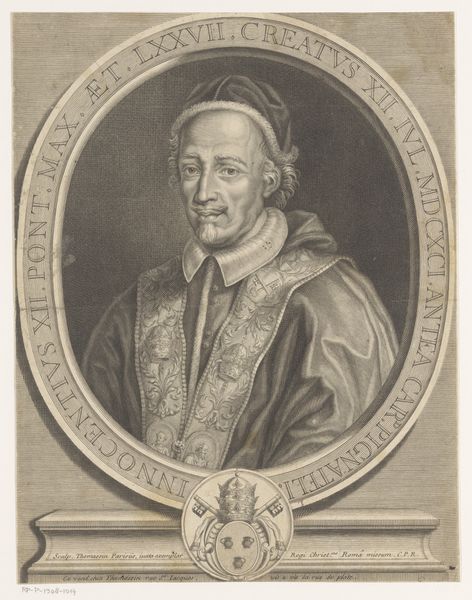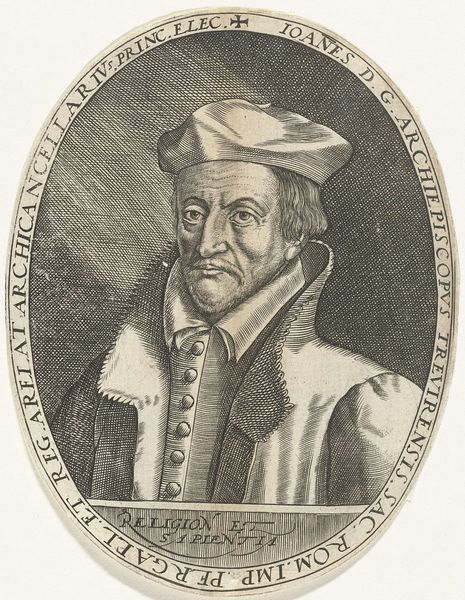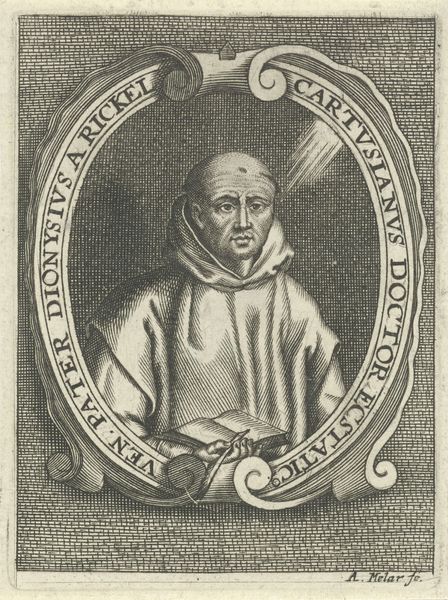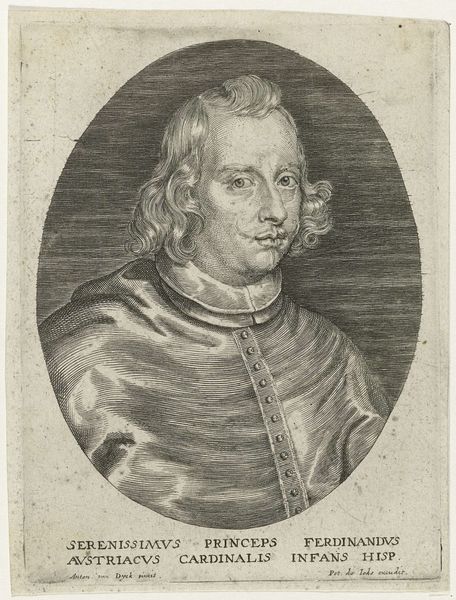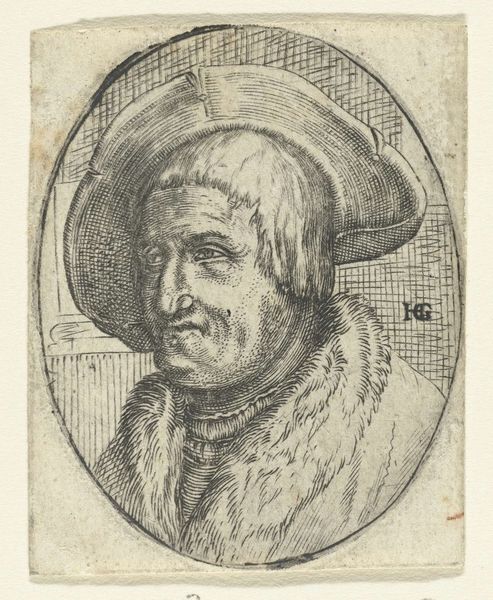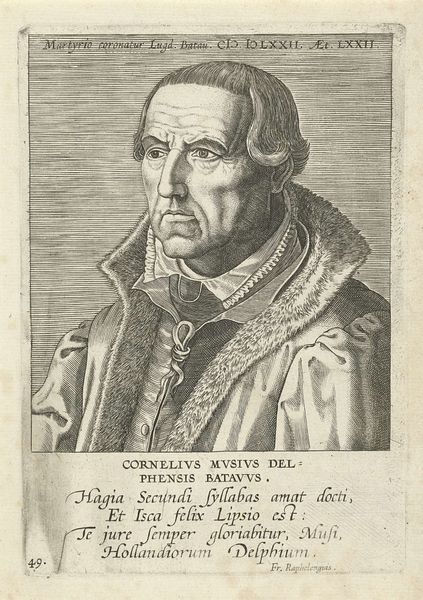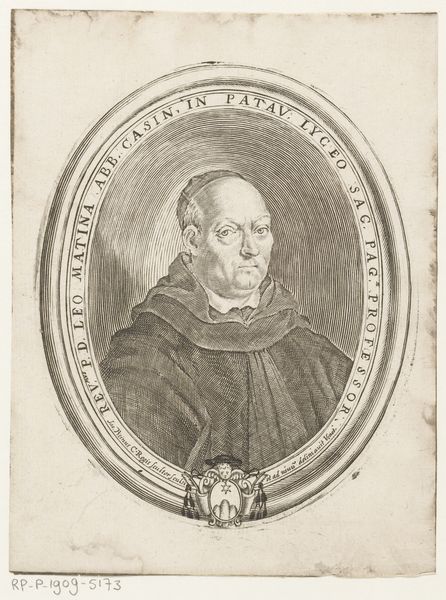
print, engraving
#
portrait
# print
#
old engraving style
#
11_renaissance
#
line
#
portrait drawing
#
northern-renaissance
#
engraving
#
realism
Dimensions: height 76 mm, width 77 mm
Copyright: Rijks Museum: Open Domain
Editor: This is an engraving of Cornelis Musius at the age of 70, created by Wierix in 1570. The precision and detail in the line work are incredible! What do you find most striking about it? Curator: The most fascinating aspect, for me, is the labor. Think of the artisan meticulously carving into the metal plate. It speaks volumes about the value placed on portraiture at the time and the social standing afforded to Musius himself. How do you think the materials themselves influenced the aesthetic of the print? Editor: The limited tonal range and sharp lines certainly give it a very distinct, almost austere, quality. I guess it’s far removed from the painterly portraits of the time. Curator: Precisely! And consider the consumption of such prints. They were relatively accessible compared to painted portraits, facilitating a broader circulation of images and ideas. This raises questions about the democratization of representation in the 16th century. Was it truly democratizing, or merely a shift in modes of production? Editor: That's a really interesting point. I hadn't considered the distribution aspect so much. It’s also a type of mass production, creating an art object from reproducible methods. Curator: Indeed. The material constraints shaped not only the artistic execution but also its reception and social impact. Thinking about it, how does that awareness change how you now perceive this print? Editor: I appreciate the print a lot more! Thinking about all of that manual labor... plus I see how the constraints of the engraving actually open up the portraiture process to new audiences, outside the wealthy elite. Curator: Exactly! And that's the power of a materialist approach: it roots art firmly within its historical and social realities.
Comments
No comments
Be the first to comment and join the conversation on the ultimate creative platform.
